Cat “litter” and litter boxes are facts of life for cat owners. Hauling heavy boxes and bags; finding a good spot for the litter box; monitoring litter-box behavior; sweeping up litter carried out of the box on busy little paws; scooping out poop and “clumps” of petrified pee; dumping used litter; and figuring out how to get rid of that distinctive litter box smell: these constitute a considerable part of cat ownership, especially now that many pet cats are indoors-only. (By the way, the word litter, which has its archaic origins in French for “bed,” was used mainly to describe either trash or livestock bedding until “cat litter” entered the lexicon.) By 2015, cat litter was a $1.8 billion business in the United States.
Until the 1940s, keeping a cat indoors exclusively took more determination than I could probably have mustered. Cat owners had to improvise a latrine, filling a wooden box, probably a discarded shipping box from a store, with sand, cinders or torn-up paper. As I did research on these early versions of cat-box filler, I was struck by how little anyone talked about it. Even a 1903 volume on breeding and showing cats, whose author was obsessed with cleanliness, failed to offer specific instructions for creating and keeping a sand box.
The story of cat-box fillers made from absorbent clays such as fuller’s earth begins with industrial-clay salesman Edward Lowe and Kitty Litter™, which Lowe first marketed under that name in 1947. Here is an early Kitty Litter™ bag that I found online in a Washington Post article about Edward Lowe ,the inventor and brilliant marketer of bagged clay.
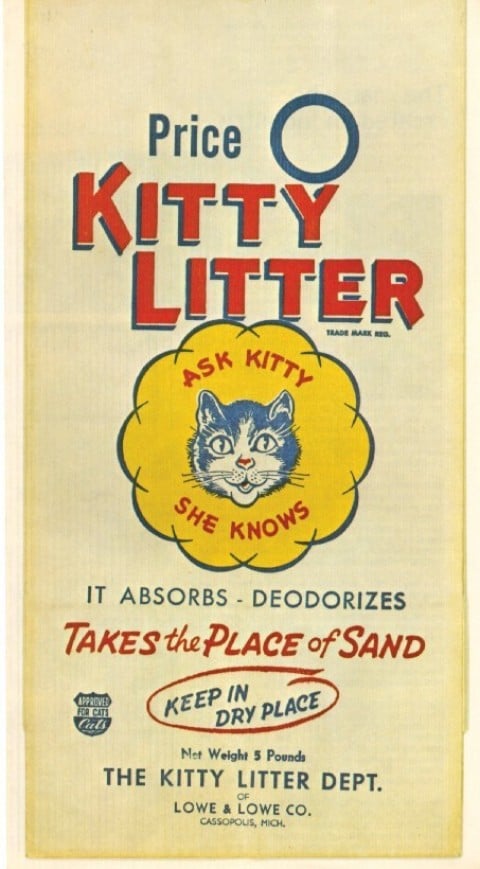
The appearance on the scene of bagged granulated clay for use in cat latrines soon led to a number of competitors. The little brochure below advertises Pet Pamper®, a short-lived litter-box filler marketed by the Southern Ezy-Mix Company of Memphis, Tennessee. The firm was known primarily for its bagged cement mix, sold through regional hardware and feed stores. The ads I have found for Ezy-Mix concrete mix suggest that it was marketed to do-it-yourselfers tackling home improvement projects. Pet Pamper® was a sideline product that competed for a short time with Kitty Litter™. It seems to have disappeared by the early 1960s.
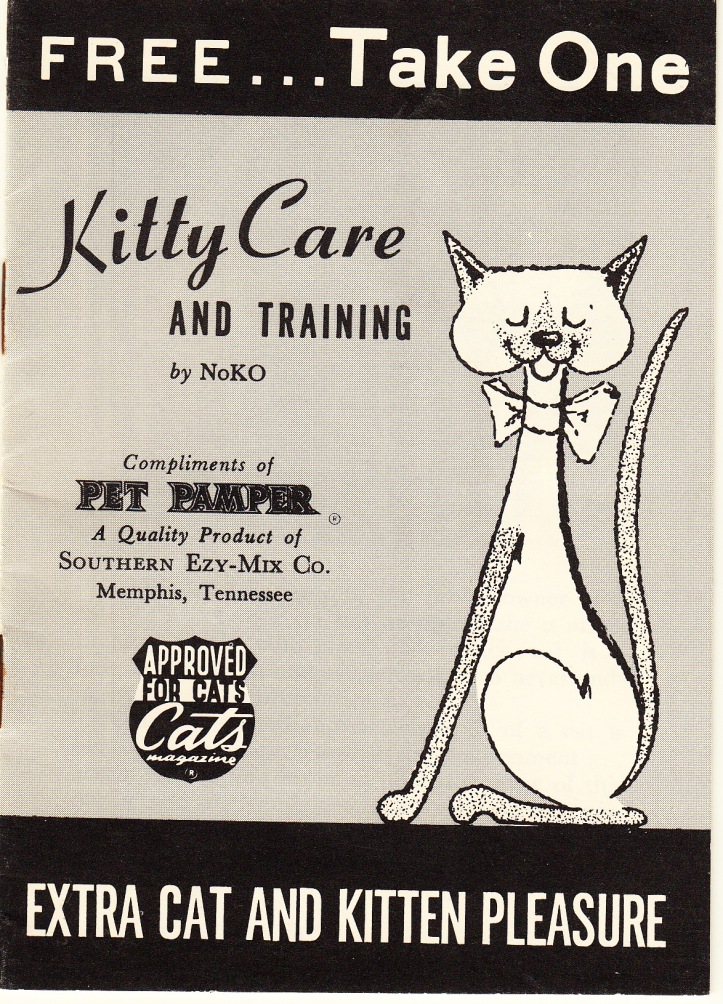
Below, the 1958 newspaper advertisement for Pet Pamper® informs cat owners that the product replaces sand and sawdust and does a better job preventing “kitty odor.”
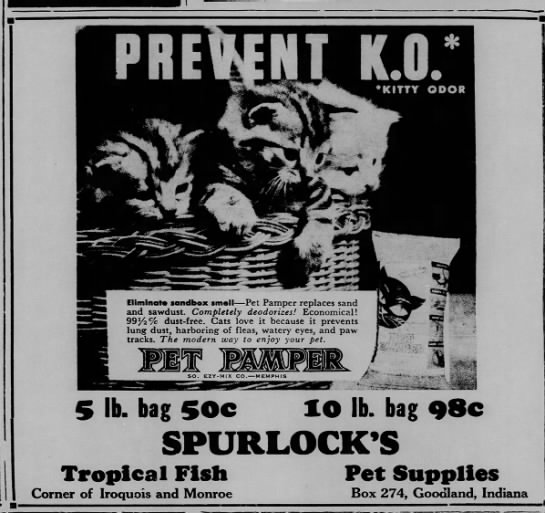
A decade after launching Kitty Litter™, Lowe’s branched out into other products for cat owners, promising a “Better Life for Kitty.”

Along with litter box filler, Lowe’s offered toys, a dry shampoo, a laxative that was intended to help hair balls move through Kitty’s digestive system, flea powder and even a disposable cardboard litter tray.
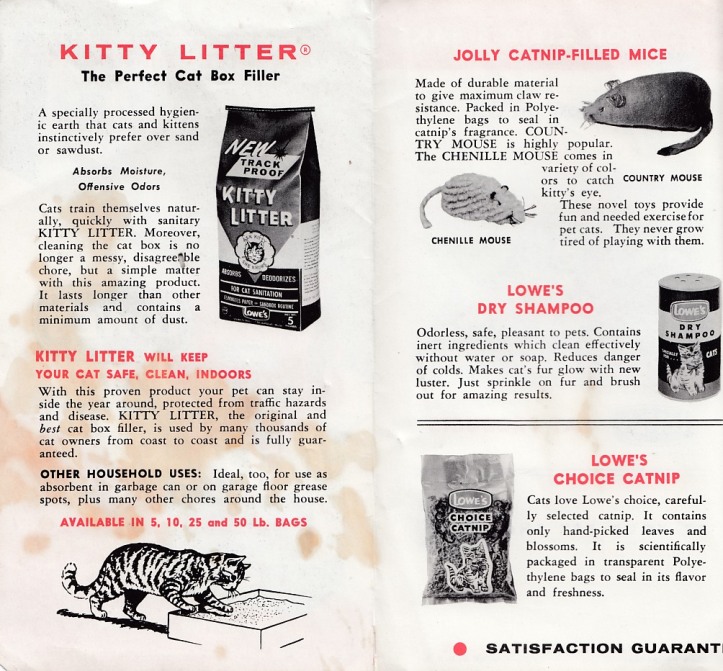
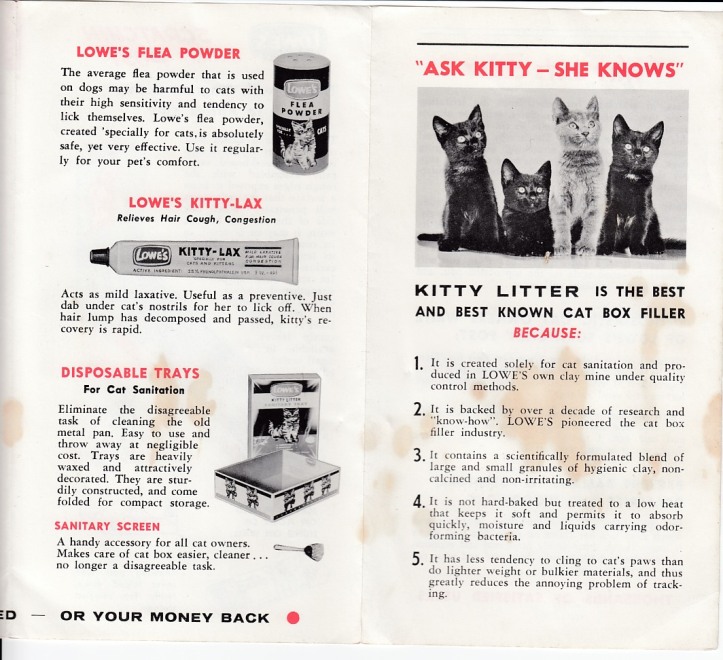
What’s interesting about the pitches for Pet Pamper and Lowe’s cat products is that they promised a better life for cats, not just their owners. And all these products were associated with keeping cats indoors rather than letting them roam freely: “Kitty Litter will keep your cat safe, clean, indoors.” I’ll be writing more about products for cats and the rise of the indoor cat in future posts. The idea of keeping pet cats at home where they could be supervised closely couldn’t get much traction until dealing with cat waste became less unpleasant.
Great to see this! We hope to have the Lowe collection processed soon at Hagley. It arrived requiring more care than necessary.